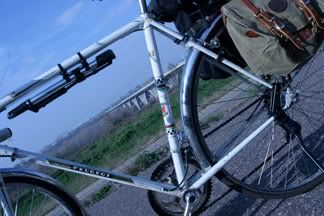
The next meeting needs to be better attended by cyclists. The word comes straight from the councilman’s aide.
Highland gets the lowest traffic, is the most direct from the Ford Bridge, and actually services the Highland Village; but without some support from the cycling community the community is not going to get the boulevard.
I don’t know why this is getting me so worked up. I just realized that the only people who will notice a difference will be the people getting sidewalks without being assessed for them. The laws related to biking are the same. The Parkway will still be on the Twin City bike map.
The folks from Public Works said there are 3 ways to improve traffic conditions
1. Enforcement
2. Education
3. Engineering
It is clear that enforcement is expensive, as it is not a sunk cost.
Education will inform people, but is not an active solution. People know that speeding is illegal, but how many cars are going the speed limit anywhere in this state.
Which leaves engineering. Engineering works well in conjunction with education. Engineering like putting more bikes on a road.
aw crap
The folks on Highland Parkway want slower traffic. We want slower traffic to bike with.
Kevin Krizek of the University of Minnesota established a way to quantify value in bike lanes. His paper on the matter published in the Journal of the American Planning Association, Vol 72, No 3, Summer 2006. His findings “indicate that bicycle commuters in Minneapolis and St Paul prefer bicycle lanes on existing streets over off street bicycle trails.”
Which means that while the bridle path down summit is very genteel, it will be much less effective. Especially since Summit already is marked with bike lanes.
Since apparently Highland Parkway is also plagued by speeding traffic, traffic calming would be a nice addition.
In the journal Injury Prevention back in 2003 had an interesting piece “Safety in Numbers: more walkers and bicyclists, safer walking and bicycling” by Peter Jacobson. The piece is a historical study of accidents in 47 Danish cities, the UK and California (the author works for the Department of Public Health in California). The article’s references make for interesting reading as well. In the discussion of the findings, motorist behavior defines the number and severity of accidents. With more bikes and pedestrians, across the board at a constant rate of N^0.4 accidents occur. If there are twice as many cyclists there are only 32% more accidents not twice as many. By diverting bike and pedestrian traffic from multiple streets to one street traffic accidents overall will decrease.
If traffic calming is changing driver behavior to prevent accidents, bikes and pedestrians are an effective means to reducing accidents. Without expensive enforcement. And 50 years of research in three countries agrees. Bike routes on streets are most effective and 30 years worth of numbers agree for our metro area.
These are not anecdotes but quantitative science. By the numbers Highland Parkway would be the best place. The community wants calmed traffic, but the city lacks the resources for increased enforcement, education has thus far been ineffective, leaving engineering. This is the best engineering option as:
1. it does not assess the community directly for improvements
2. it improves the safety of the community
We want similar things right? Safe streets and no out of pocket expenses.
Well maybe not the same things as bridle path guy. He wants a pony.
Image copyright Jeff Jaques via www.Questionablecontent.net

1 comment:
I want a pony!!!! Ponies are delicious! ;>
Post a Comment